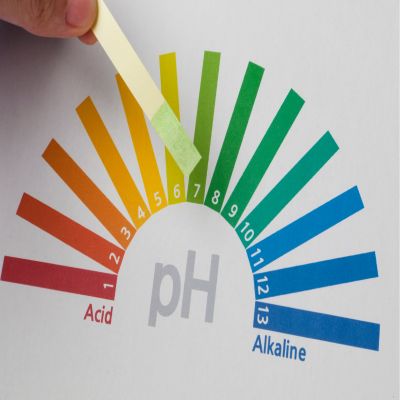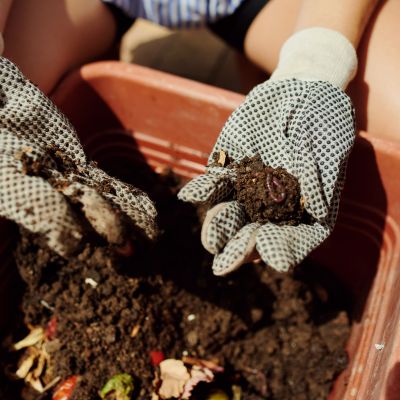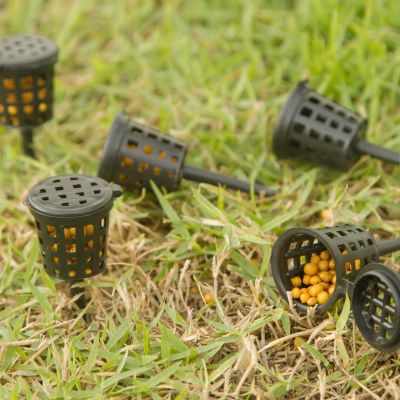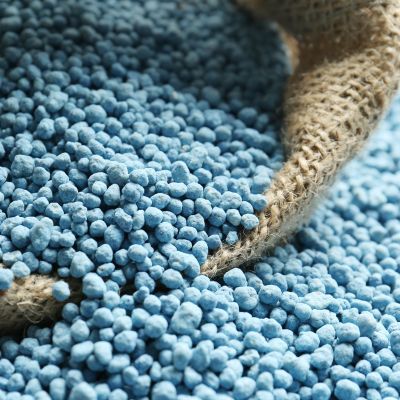When to Fertilize Your Lawn? Fertilizing your lawn at the right time ensures lush, green grass and a healthy turf. Timing your fertilizer applications correctly helps provide essential nutrients when your lawn needs them most, promoting vigorous growth, strong root development, and overall resilience to environmental stressors. Understanding the optimal timing for fertilization is key to maintaining a vibrant and thriving lawn throughout the year. In this comprehensive guide, we’ll explore when to fertilize lawn, the factors influencing the timing of fertilization, the types of fertilizers available, and strategies for maintaining a healthy lawn through each season. Whether you’re a seasoned lawn care enthusiast or a beginner looking to enhance your lawn’s health, this guide will provide you with valuable insights and practical tips for effective fertilization practices.
Importance of Fertilizing Your Lawn
Fertilizing your lawn is essential for maintaining its health, lushness, and vibrant green color. Proper fertilization provides essential nutrients that promote strong root growth, disease resistance, and overall vigor. A well-fertilized lawn not only looks better but also performs better in terms of resilience to environmental stressors. Additionally, it contributes to the ecosystem by supporting beneficial soil microorganisms and reducing soil erosion.
- Fertilizing provides essential nutrients like nitrogen, phosphorus, and potassium, which are vital for the growth and development of grass.
- Nutrients in fertilizers encourage strong root growth, enabling your lawn to better withstand drought, disease, and other stressors.
- Well-fertilized lawns are better equipped to resist diseases and pests, as they maintain optimal health and vigor, preventing common issues such as fungal infections and insect infestations.
- Fertilizers contribute to vibrant green coloration and lush foliage, enhancing the aesthetic appeal of your lawn.
Factors Influencing the Timing of Fertilization
When to fertilize lawn? The timing of fertilization, a pivotal event in the reproduction process, is influenced by many factors intricately woven into the biological tapestry of life. Understanding the intricate web of influences that govern this critical juncture sheds light on the mechanisms of reproduction and holds profound implications for fields ranging from assisted reproductive technologies to the conservation of endangered species. Understanding when to fertilize your lawn requires consideration of various factors. In this exploration, we dive into the diverse array of factors that shape the timing of fertilization, unraveling the mysteries that govern the creation of new life.
Understanding Your Lawn’s Needs
To cultivate a lush, vibrant lawn that serves as the verdant centerpiece of your outdoor sanctuary, it is imperative to embark on a journey of understanding that explores deep into the intricate needs of your turf. Like a living organism, your lawn thrives when its requirements are meticulously met, spanning from the soil beneath to the canopy above. Let’s dive deep into the context:
Grass Types and Their Fertilizer Requirements
Different grass species have varying nutrient requirements. Understanding the type of grass in your lawn will help determine the right fertilization schedule and the type of fertilizer to use. For example, cool-season grasses may benefit from early spring and fall fertilization, while warm-season grasses thrive with summer applications.
Soil Type and pH Levels
Soil composition and pH levels affect nutrient availability to your lawn. Conducting a soil test can provide valuable insights into your soil’s pH and nutrient levels, guiding your fertilization efforts. Amending soil pH as needed ensures optimal nutrient uptake by the grassroots.
Climate Considerations
Climate plays a significant role in determining the timing of fertilization. Factors such as temperature, rainfall, and humidity influence grass growth and nutrient uptake. Adapting your fertilization schedule to local climate patterns ensures that your lawn receives nutrients when it needs them most.
Lawn Usage and Traffic
Lawns subject to heavy foot traffic may require more frequent fertilization to withstand wear and tear. Implementing strategic fertilization in high-traffic areas promotes turf recovery and maintains an even, healthy lawn appearance. Regular Lawn aeration can also improve nutrient penetration and soil compaction in these areas.
Types of Lawn Fertilizers
Choosing the right fertilizer for your lawn is crucial for promoting healthy growth and maintaining vibrant green turf. With a myriad of options available, understanding the different types of lawn fertilizers and their specific characteristics can help you make informed decisions tailored to your lawn’s needs. From synthetic formulations to organic alternatives, each type of fertilizer offers unique benefits and considerations to consider when nourishing your lawn. Check out in details:
Synthetic Fertilizers
Synthetic fertilizers are manufactured chemical compounds designed to provide specific nutrients to your lawn. They often deliver fast results but may require more frequent applications. Choosing a balanced synthetic fertilizer with controlled-release technology minimizes nutrient leaching and promotes long-lasting effects.
Organic Fertilizers
Organic fertilizers are derived from natural sources such as compost, manure, or plant by-products. They release nutrients slowly and improve soil health over time. Incorporating organic fertilizers into your lawn care regimen enhances soil structure, increases microbial activity, and reduces dependence on synthetic inputs.
Slow-Release Vs. Quick-Release Fertilizers
Slow-release fertilizers provide nutrients gradually over an extended period, offering sustained feeding to your lawn.
Quick-release fertilizers, on the other hand, deliver nutrients rapidly but may require more frequent applications. Combining both types of fertilizers ensures continuous nutrient availability for consistent turf growth and vitality.
Liquid Vs. Granular Fertilizers
Liquid fertilizers are applied using a sprayer and are quickly absorbed by the grass. Granular fertilizers are applied dry and release nutrients gradually as they break down. Choosing the appropriate formulation depends on your lawn’s specific needs, application method preferences, and desired nutrient release rates.
The Importance of Timing
When to fertilize the lawn? In everything we do, when we do it matters a lot. Whether it’s planting seeds in a garden or making a friend, timing can change everything. It’s like catching a bus—if you’re early, you might miss it, but if you’re late, you definitely will! Timing is all about seizing the right moment, and grabbing opportunities when they come knocking. Let’s take a closer look at why timing is so important and how it can make a big difference in our lives.
Summer Fertilization
Summer fertilization focuses on maintaining lawn health during periods of high heat and stress. Choosing the right fertilizer and applying it correctly is crucial to avoid damaging your lawn during this sensitive time. Watering deeply and infrequently during hot summer also helps prevent nutrient leaching and promotes deeper root growth.
Spring Fertilization
Springtime lawn care and fertilization jump-starts lawn growth after winter dormancy and replenishes nutrients lost during the colder months. Applying a balanced fertilizer with higher nitrogen content encourages lush green growth and helps the lawn recover from winter stress.
Strategies to Maintain a Healthy Lawn During Summer
Keeping your lawn healthy during the summer months can feel like a challenge, but with the right strategies, you can keep it green and thriving. Summer brings its own set of challenges, like scorching heat and dry spells, which can stress out your grass. But don’t worry, there are simple steps you can take to help your lawn stay lush and vibrant. Let’s explore some effective strategies to maintain a healthy lawn during the hottest time of the year.
- Water deeply and infrequently early in the morning
- Set mower blades higher to leave grass longer for shade and deeper root growth
- Apply slow-release fertilizer formulated for summer
- Monitor for pests and diseases regularly
- Provide shade and shelter with trees or shade sails
Fall Fertilization
Fall fertilization prepares your lawn for winter dormancy by promoting root growth and nutrient storage, ensuring a strong start in the following spring. Applying a phosphorus-rich fertilizer in the fall encourages robust root development and enhances winter hardiness, preparing the lawn for optimal growth in the coming seasons.
Signs Your Lawn Needs Fertilizing
Noticing signs that your lawn needs fertilizing is crucial for maintaining its health and vibrancy. A lush, green lawn can often communicate its needs through subtle cues, indicating when it requires a boost of nutrients to thrive. From patches of yellowing grass to slow growth and diminished density, recognizing these signals allows you to intervene effectively, ensuring that your lawn remains in optimal condition throughout the growing season. So, when to fertilize lawn? Let’s explore some common signs that indicate it’s time to fertilize your lawn, empowering you to take proactive steps toward its rejuvenation and vitality.
Visual Cues of Nutrient Deficiencies
Yellowing or browning grass, thinning patches, and poor growth are signs that your lawn may need fertilization. Addressing these symptoms promptly with targeted fertilization restores nutrient balance and revitalizes the lawn’s appearance.
Soil Testing and Analysis
Regular soil testing can reveal nutrient deficiencies and guide your fertilization schedule. Proper soil testing provides crucial data about soil. By monitoring soil nutrient levels and pH, you can adjust fertilizer applications to meet your lawn’s specific needs, optimizing nutrient uptake and minimizing waste.
Monitoring Grass Growth and Color
Observing your lawn’s growth and color can help identify nutrient deficiencies and adjust your fertilization regimen accordingly. Healthy, vigorously growing grass with vibrant green coloration indicates adequate nutrient availability, while stunted growth and pale color suggest underlying nutrient imbalances that require attention.
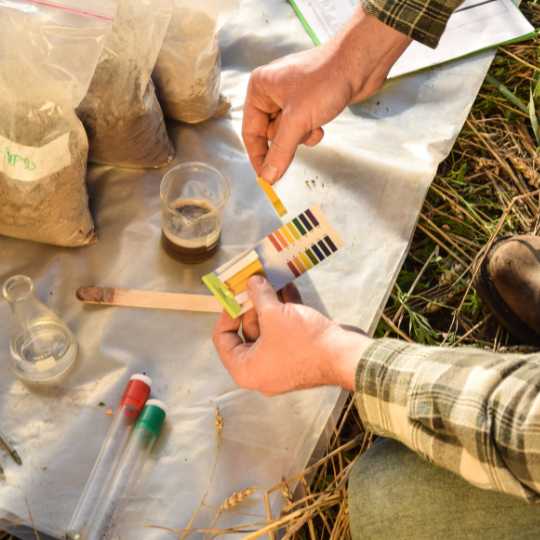
How to Fertilize Your Lawn?
Knowing how to fertilize your lawn correctly is important. Fertilizing your lawn is a key step in maintaining its health and appearance. Begin by choosing the right fertilizer for your grass type and soil needs. Read and follow the instructions carefully to avoid over-application, which can harm your lawn and the environment. Apply fertilizer evenly using a spreader and water thoroughly afterward to help the nutrients penetrate the soil.
Timing is crucial when fertilizing your lawn. Aim to fertilize in the early spring to kickstart growth and again in the fall to prepare your lawn for winter. Avoid fertilizing during periods of extreme heat or drought, as this can stress the grass and increase the risk of fertilizer burn. By following these steps and paying attention to your lawn’s needs, you can ensure that it remains healthy and vibrant throughout the growing season.
Troubleshooting Common Issues
When it comes to maintaining a healthy lawn or garden, occasional challenges are inevitable. Whether it’s brown patches, wilting plants, or pesky pests, troubleshooting common issues is an essential skill for any gardener or homeowner. Let’s explore some common gardening woes and strategies for addressing them effectively.
Burn Spots from Over-Fertilization
Over-fertilization can lead to chemical burns on your lawn. Proper application techniques and following recommended dosage guidelines can prevent this issue. Additionally, watering the lawn thoroughly after fertilization helps flush excess nutrients from the soil and minimize burn risk.
Uneven Growth or Coloration
Uneven growth or coloration may indicate poor fertilization distribution. Ensure even application and consider core aerating to improve nutrient uptake. Regular mowing at the appropriate height also promotes uniform growth and color throughout the lawn.
Pest and Weed Problems Related to Fertilization
Imbalanced fertilization can promote weed and pest infestations. Integrated pest management practices and balanced fertilization can help mitigate these issues. Choosing fertilizers with added herbicides or pesticides targets specific lawn pests while providing essential nutrients, reducing the need for separate applications.
Solutions for Nutrient Deficiencies
Addressing specific nutrient deficiencies with targeted fertilization can revive your lawn’s health and vitality. Incorporating micronutrient-rich fertilizers or soil amendments corrects nutrient imbalances and promotes optimal turf growth. Regularly monitoring soil and tissue nutrient levels allows for proactive adjustments to prevent deficiencies before they impact lawn health.
Lawn Fertilization Schedule
A well-planned lawn fertilization schedule is crucial for maintaining a healthy and vibrant lawn throughout the year. Here’s a simple guide to help you keep your grass green and thriving:
- Early Spring: Start the season by applying a balanced fertilizer to kickstart growth and green-up your lawn after the winter dormancy. Look for a fertilizer with a higher nitrogen content to promote lush, green growth.
- Late Spring: As the weather warms up, consider applying a second round of fertilizer to provide your lawn with a boost of nutrients for the growing season ahead. Choose a slow-release fertilizer to provide steady nutrition over time.
- Summer: During the summer months, it’s essential to focus on maintaining your lawn’s health and resilience against heat stress. Consider using a fertilizer with a balanced N-P-K ratio, along with supplemental applications of organic matter like compost to improve soil health.
- Early Fall: As temperatures begin to cool down, it’s time to prepare your lawn for the winter months ahead. Apply a fertilizer with a higher phosphorus content to promote root growth and winter hardiness.
- Late Fall: Before the onset of winter, apply a final round of fertilizer to help your lawn store up nutrients for the dormant season. Look for a fertilizer with a balanced N-P-K ratio and consider incorporating potassium to improve cold tolerance and disease resistance.
Sustainable Lawn Care Practices
Check out some of the sustainable lawn care practices:
- Water conservation: Use rain barrels, smart irrigation systems, and deep, infrequent watering.
- Natural fertilization: Utilize compost and grass clippings instead of chemical fertilizers.
- Integrated Pest Management (IPM): Employ holistic pest control methods, such as promoting natural predators and using physical barriers.
- Low-impact lawn maintenance: Switch to electric or battery-powered equipment and maintain grass at a slightly higher height to reduce mowing frequency.
Conclusion
Proper fertilization is integral to maintaining a healthy, vibrant lawn. By understanding your lawn’s needs, choosing the right fertilizer, and timing applications appropriately, you can ensure lush, green grass year-round while minimizing environmental impact and promoting sustainability in your lawn care routine. Regular monitoring and adjustments based on soil and grass health promote long-term lawn resilience and sustainability, contributing to a beautiful outdoor space for years to come.
When to Fertilize Lawn FAQs
How to Fertilize Lawn?
Fertilize your lawn by choosing the right fertilizer for your grass type and soil needs. Apply evenly using a spreader, and water thoroughly afterward to help the nutrients penetrate the soil. Need expert support? Contact us. We are near you.
What Does Fertilizer Do for Grass?
Fertilizer provides nutrients to grass, such as nitrogen, phosphorus, and potassium, promoting healthy growth, root development, and overall vigor.
How to Apply Fertilizer to Lawn?
Apply fertilizer evenly using a spreader according to the manufacturer’s instructions. Ensure proper coverage and avoid over-application, which can harm your lawn and the environment.
What Is the Best Nutrient for a Lawn?
Nitrogen is often considered the most important nutrient for lawns, as it promotes lush, green growth. However, phosphorus and potassium are also essential for root development and overall plant health.
How Often Can You Fertilize Your Lawn?
The frequency of fertilization depends on factors such as grass type, soil conditions, and climate. In general, fertilize your lawn 2-4 times per year, with applications spaced evenly throughout the growing season.
How to Know What Fertilizer to Use on Lawn?
Choose a fertilizer that matches your grass type and soil needs. Look for products labeled with the appropriate analysis of nitrogen, phosphorus, and potassium (N-P-K) ratios, and consider factors such as slow-release formulations and organic options for sustainable lawn care.


